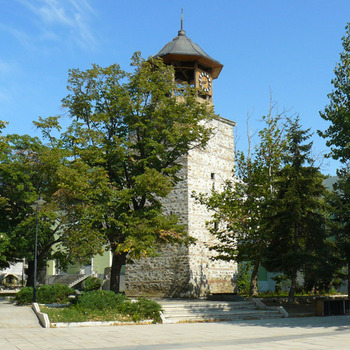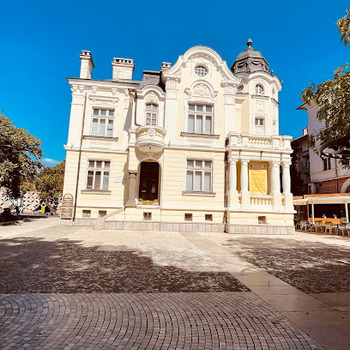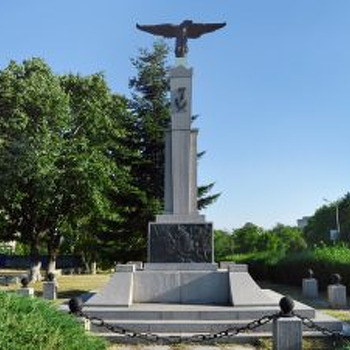Zahari Stoyanov House-Museum
Overview
It is located in the village of Medven, in the house of Zahari Stoyanov (1850-1889) - chronicler of the April Epic, champion of three uprisings, activist of the Union, publicist and statesman, a person who can be proud of any national history. He was born in 1850 in the family of the shepherd Stoyan Dzhedev Dalakchiev from the village of Medven, Sliven region. His birth name is Jendo. He studied in the church and class school in his native village (1856 - 1862). He worked as a shepherd in the village of Injekoy (today Topoli), Varna region and in the village of Podvis, Burgas region (1866 - 1870). He went to Varna to study at a secular school, but was not accepted. From there he goes to Ruse. While apprenticed as a tailor in Ruse, he joined the Ruse Private Revolutionary Committee of the BPO (1871 - 1872). Maneuvering official in the Baronhirsh railway at Tarnovo-Seimen station (now Simeonovgrad, 1873). Zahariy Stoyanov took part in the Stara Zagora Uprising (1875). One of the leaders of the IV Plovdiv Revolutionary District during the April Uprising (1876). From the very beginning of the uprising he became part of Benkovski's Hvarkov detachment. After the defeat of the uprising, together with Georgi Benkovski, Father Kiril and Stefo the Dalmatian crossed the ridge of the Balkan Mountains, but were betrayed and ambushed in the Teteven Balkans. Georgi Benkovski was killed and Stefo the Dalmatian and Father Kiril, who was wounded, were captured. Zahariy Stoyanov manages to escape. After several days of wandering in the Balkan Mountains, he was captured near the village of Terziyskoto, Troyan region. After several months spent in Troyan, Lovech, Sevlievo, Tarnovo, Elena, Sliven and Novozagorsk prisons, he found himself in Plovdiv, and later was forcibly sent to the village of Medven. He went illegally to the already liberated town of Tarnovo (1877). After the Liberation from Ottoman rule he was a member of the district court in Tarnovo (1880), then secretary of the Court of Appeal and judicial investigator in the district court in Ruse (1881). During this period, with his publications in the newspapers Nezavisimost and Rabotnik, of which he also became editor, he became famous as a representative of the radical wing of the Liberal Party. His article in The Worker, which saw the assassination of Emperor Alexander II as an opportunity to liberalize the regime in Russia, caused a scandal and was used by Prince Alexander as an argument to gain Russian support for the April 1881 coup. Under the Regime of Powers he went to Plovdiv, where he was an employee of the Directorate of Justice of Eastern Rumelia (1882 - 1885). He headed the Bulgarian Secret Central Revolutionary Committee, which organized the unification of Eastern Rumelia with the Principality of Bulgaria (1885). He settled in Sofia in 1886. He was actively involved in the activities of the People's Liberal Party. Member of the 5th Ordinary National Assembly (1887). Its vice-chairman (1887) and chairman (1888-1889). On the occasion of the two-year anniversary of the accession to the throne of Prince Ferdinand I Zachary Stoyanov was awarded the Princely Order "St. Alexander ”I degree (1889). He died on September 2, 1889 at the Hotel de Suez in Paris from a ruptured intestine due to poisoning. His brothers Ivan and Vasil and his cousin Stefan Dimitrov, together with Anton Prudkin, organized in 1903 a series of attacks on the ships "Vashkapu", "Tenedos", "Apollo" and "Felix Fresine" in the Burgas Bay. The Thessaloniki attacks and the Ilinden-Preobrazhensko uprising continue. He is married to Anastasia Obretenova. He has one daughter from his marriage - Zaharinka. The exposition presents interesting photo-documentary material, items of Zahari Stoyanov - suitcase, tailcoat and copy of his personal seal, as well as items from the second half of the XIX century - shepherd's clothes, yamurluk, beehive, knife "Karakulak", belonging to a Turkish massacre shepherd. Works related to the journalistic activity of Zahari Stoyanov and editions of "Notes" are also presented.
Recommended
Zheravna Reserve; Rusi Chorbadji House Museum; House-museum of Sava Filaretov; Blue pool (waterfall); Tabora Horse Base; Museum of the Kotel Revivalists


 Bulgarian
Bulgarian Romanian
Romanian




